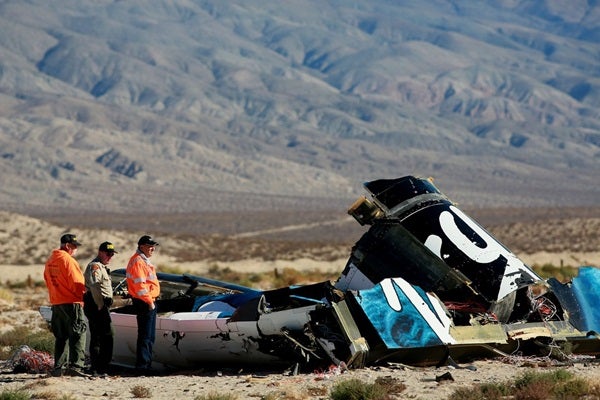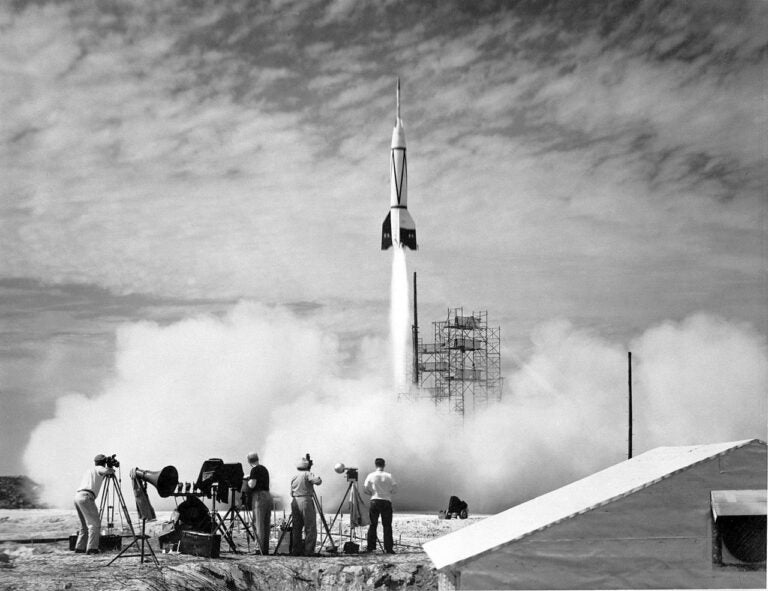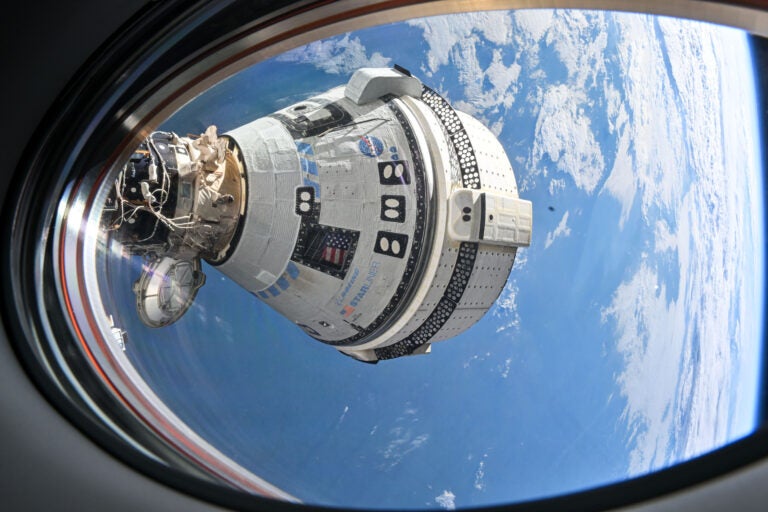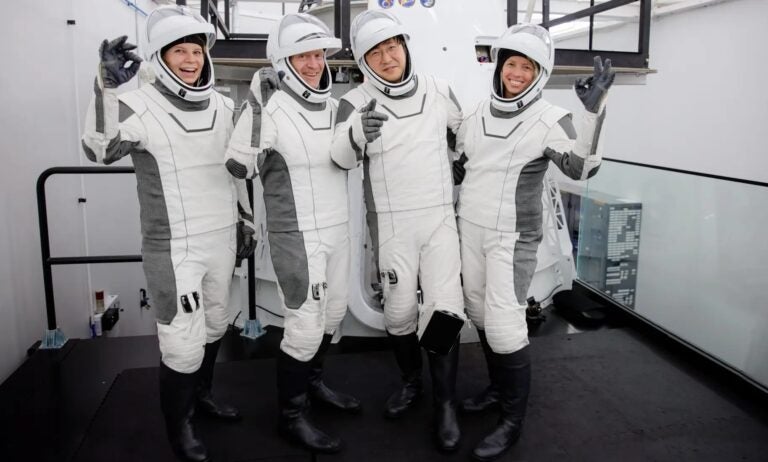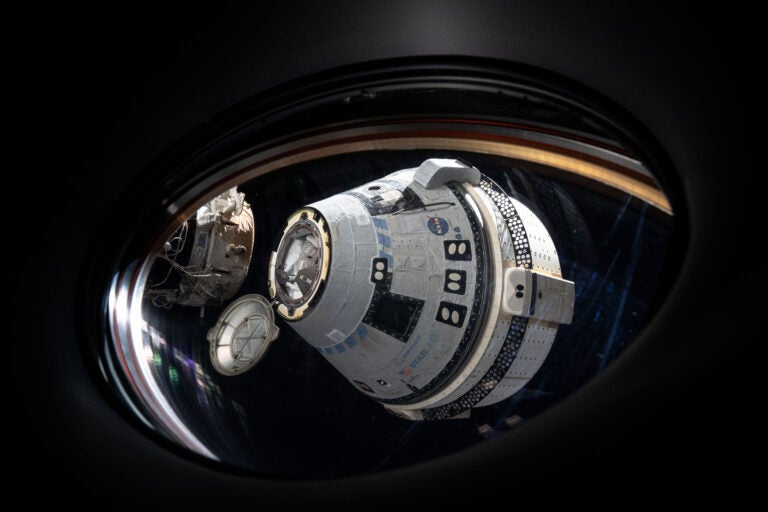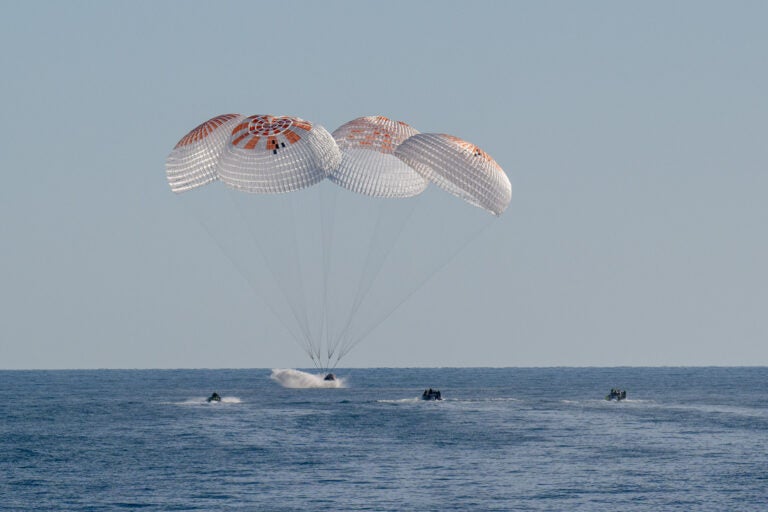In a press conference at the Mojave Air and Sport Port on Sunday evening, acting NTSB Chairman Christopher Hart revealed preliminary findings in the investigation of the Virgin Galactic SpaceShipTwo test flight accident that occurred October 31. According to Hart, review of cockpit video during the flight showed that the co-pilot Michael Alsbury turned the tail feathering lock-unlock lever to the unlocked position too early. But Hart was quick to add that the NTSB has not concluded that this represents a cause and effect, and more analysis is necessary.
“I am not stating this was the cause of this mishap,” he said. “We have months and months of investigation to determine what the cause was.”
Feathering of the tail is an action taken during reentry at high altitude in order to increase drag and accelerate the space vehicle’s descent. The apparently unscripted action by Alsbury was taken just seconds into the flight of SpaceShipTwo when the suborbital space vehicle had reached the speed of sound, Mach 1 in the denser atmosphere at roughly 50,000 feet. However, unlocking the feathering mechanism was not followed by the second step — moving of another lever which actually rotates the twin tail sections relative to the fuselage to increase the drag for the feathering, which is like a shuttlecock effect. Two seconds after Alsbury’s action and the feathering, SpaceShipTwo experienced a catastrophic breakup.
Feathering of the twin tail section of SpaceShiptTwo requires the pilots to execute two steps. The co-pilot Alsbury executed the first step — unlocking. According to the NTSB investigators, the unlocking of the mechanism should not have been enough to cause the feathering during the ill-fated test flight. The lock-unlock mechanism represents a safety feature. The feathering should only occur after the pilot moves a second lever which is not unlike the lever in a conventional aircraft that lowers the landing flaps to increase lift, but as with feathering, at the expense of adding more drag.
Clearly this discovery by the NTSB is turning their focus away from the rocket engine which has posed so much difficulty for Scaled Composites project life cycle of SpaceShipTwo. The propulsion system has been primarily to blame for the delays which Virgin Group founder, Richard Branson has stated stands at five years; the project development now at the 10 year mark.
Discussions in the blogosphere involving aeronautic and propulsion experts and average citizens had quickly turned to criticism of the SpaceShipTwo rocket motor. However, review of the debris appeared to show the rocket motor intact. With this NTSB finding, there is likely to be a pause and change in the focus. However, if the NTSB investigation concludes that the feathering is the cause of the accident, this may not discharge the many concerns about safety of the SpaceShipTwo propulsion system design.
Virgin Galactic CEO Richard Branson responded harshly to the criticism of the propulsion system. “I’ve never seen such irresponsible innuendo and damaging innuendo,” he told Sky News television in the United Kingdom. “The fuel tanks and the engine were intact, showing there was no explosion, despite a lot of self-proclaimed experts saying that was the cause,” he said.
The SpaceShipTwo test flight accident occurred at 10:12 a.m. PDT on October 31. One day later, NTSB agents had arrived in the Mojave Desert to begin the investigation. During the first press conference, Hart stated that while the investigation is expected to last most of a year, he emphasized that the telemetry recorded during the flight was comprehensive and would be instrumental to uncovering a cause and effect.
The telemetry included several video recordings from the carrier aircraft WhiteKnightTwo, from ground video cameras, and also from inside the cockpit. It is a review of the latter that showed the releasing of the feathering safety lock mechanism by Alsbury. Co-pilot Alsbury died as a result of vehicle’s breakup while the pilot, Peter Siebold, escaped or was thrown from the vehicle and parachuted to the ground. Siebold is in serious condition but conscious and speaking to family and attending physicians.
Another point of comparison between the feathering of the SpaceShipTwo tail section with conventional aircraft flaps is that flaps are given a maximum speed at which they can be safely deployed. Deployment at beyond the maximum speed risks severe mechanical stress to the airframe. The feathering that occurred during the test flight at Mach 1 and at the low altitude of the early phase of powered flight by SpaceShipTwo would also have caused sudden and severe stress and potentially the breakup of the vehicle.
Hart stated that a follow-up press conference would be held and will provide more details regarding the NTSB discovery. Hart, during the Sunday press conference, reiterated that despite this early discovery, the investigation is still expected to take a year to conclude. Universe Today will follow with an update after the completion of the Monday press conference.
Contributing writer Tim Reyes is a former NASA software engineer and analyst who has supported development of orbital and lander missions to the planet Mars since 1992. He has an M.S. in Space Plasma Physics from University of Alabama, Huntsville.
See more coverage from Tim Reyes at www.universetoday.com.

